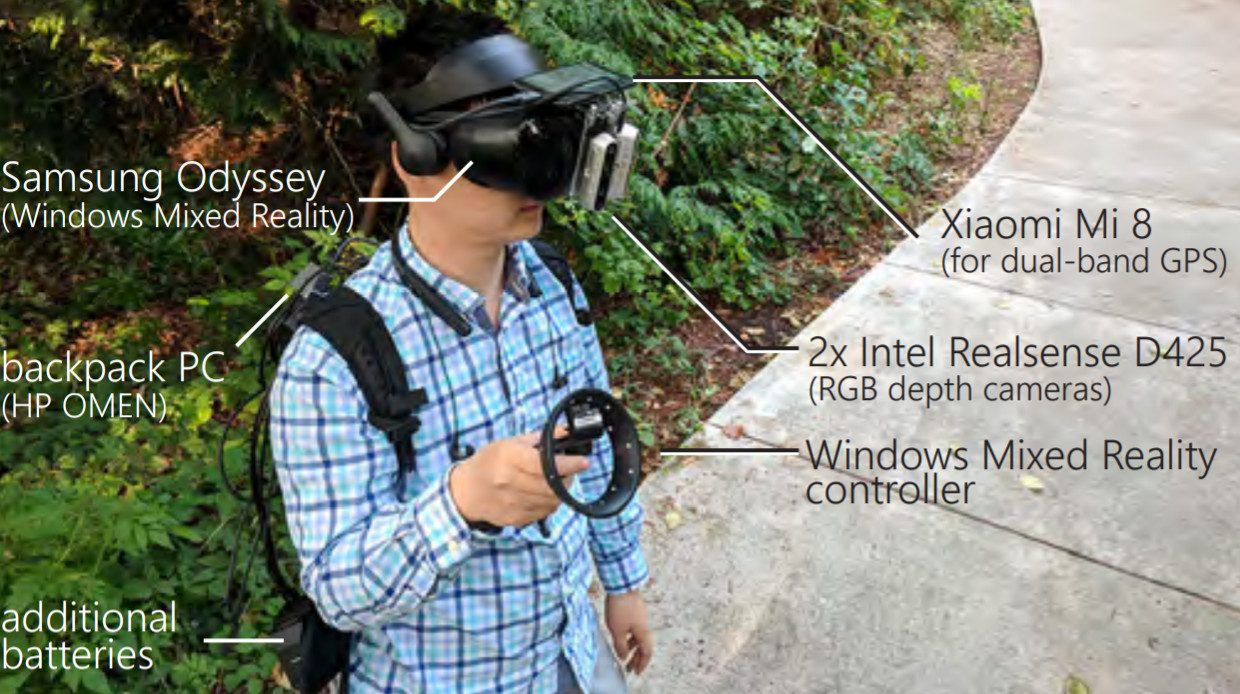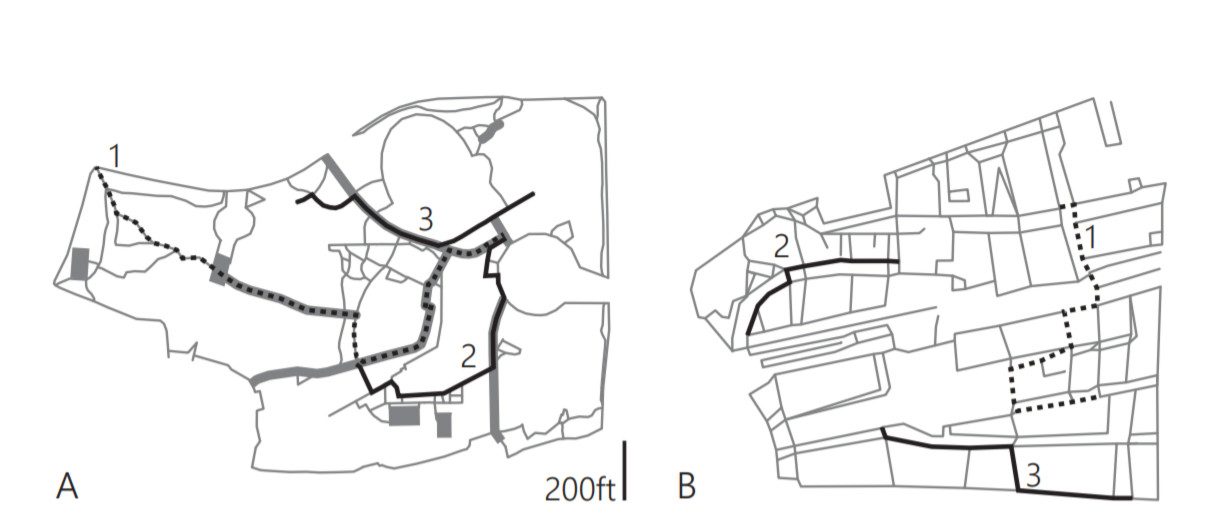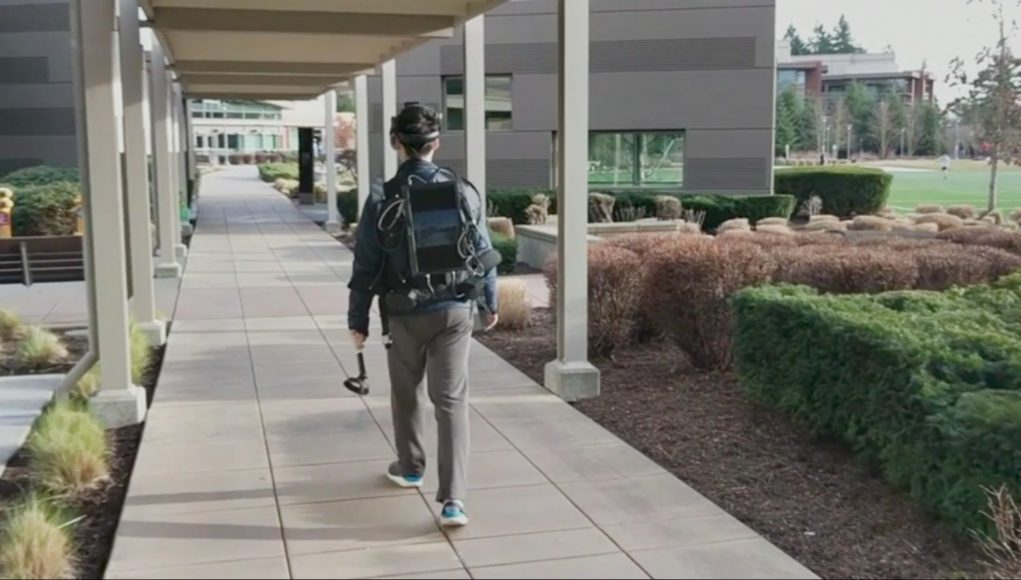Microsoft unveiled an experiment this week that explores the future of always-on virtual reality. Building a system called DreamWalker, Microsoft researchers walk around in the physical world while still being fully immersed in VR, essentially taking the first steps into replacing your morning walk with something that’s not only reactive to your physical surroundings, but ultimately more interesting.
To do this, DreamWalker fuses a Windows VR headset’s inside-out tracking, two RGB depth sensors, and GPS locations. The system, the researchers maintain in their paper, can continuously and accurately position the user in the physical world, sense walkable paths and obstacles in real-time, and represent paths through a dynamically changing scene in VR to redirect the user towards the chosen destination.
Created by Jackie Yang, Eyal Ofek, Andy Wilson, and Christian Holz, the experiment shows it’s clearly still early days for always-on VR—the system requires a backpack-mounted computer and a load of other gear—however DreamWalker poses some interesting questions related to how such a system could (or rather should) be shaped around a dynamic world.

In the paper, the researchers pose a few methods of keeping you safely on your path, including obstacle avoidance techniques like digital pedestrians moving you away from potential danger and controlling a user’s paths with dynamic events such as vehicles being parked in front of you (video linked below). And while randomly spawning traffic cones or a wild gang of pedestrians herding you to your destination may seem like inelegant solutions for now, there’s no telling what a smarter, more integrated system may hold in the future.
For all its marketing bloat, Magic Leap poses such a highly integrated system in its hypothetical Magicverse that would necessarily require a fairly complete understanding of the physical world, including pre-mapped and digitized streets, buildings—everything so you could potentially ‘reskin’ the world to a varying extent.
Microsoft’s method is decidedly less involved than Magic Leap’s moon-shot idea, which thus far has only been presented as a hypothesis more than object of active experimentation. The researchers instead take the user’s planned walking area and match it up as best they can with a digital map, introducing re-directed walking when needed to curb the user from veering off course.

Of course, neither AR or VR hardware is capable of doing all of this for now, however it’s not out of the question for future devices. Whatever off-the-shelf parts the researchers have strapped together are more than likely to find themselves on future headsets in some form, which includes greater rendering power, better computer vision, and on-board GPS for better location-based play.
Moreover, these early steps are predicated on the very real assumption that the better AR/VR gets, the more time we’ll spend interacting in digital environments, making something mundane like a walk through the park as exciting and novel as creators can make it.
Check out the four-minute video below to see the research group’s findings it in action:







